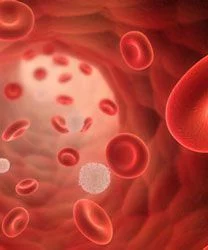Article
GTB-3550 TriKE Reduces Bone Marrow Blast Levels in High-Risk MDS, Relapsed/Refractory AML
Author(s):
The trispecific killer cell engager product GTB-3550 was found to result in up to a 63.7% reduction in bone marrow blast levels in patients with high-risk myelodysplastic syndromes and relapsed/refractory acute myeloid leukemia.

The trispecific killer cell engager (TriKE) product GTB-3550 was found to result in up to a 63.7% reduction in bone marrow blast levels in patients with high-risk myelodysplastic syndromes (MDS) and relapsed/refractory acute myeloid leukemia (AML), according to updated interim data from a phase 1/2 clinical trial (NCT03214666).1
Five to 9 patients received treatment with the product at increasing doses, including 25 mcg/kg/day, 50 mcg/kg/day, and 100 mcg/kg/day. Sixty percent of patients (n = 3/5) were noted to have experienced a reduction in bone marrow blasts. Of patients who achieved the benefit, 2 experienced significant reductions in these levels; 1 patient received the TriKE at 50 mcg/kg/day and the other received it at 100 mcg/kg/day.
Patient 7, who received the product at a dose level of 50 mcg/kg/day, experienced a 61.7% reduction in bone marrow blast levels; levels dropped from 12% prior to receiving GTB-3550 to 4.6% following treatment.
Notably, none of the patients who received higher dose levels of the product experienced any-grade cytokine release syndrome (CRS).
The agent is a single-chain, trispecific scFv recombinant fusion protein conjugate that is comprised of the variable regions of the heavy light chains of anti-CD16 and anti-CD33 antibodies, as well as an altered form of interleukin-15 (IL-15). The natural killer (NK) cell stimulating cytokine human IL-15 portion of the molecule offers a self-sustaining signal that stimulates NK cells and augments their ability to kill.
For the single-center phase 1/2 trial, investigators set out to evaluate the TriKE in the treatment of patients with CD33-expressing, high-risk MDS, relapsed/refractory AML, or advanced systemic mastocytosis.2
Investigators hypothesized that GTB-3550 would induce NK cell function through targeting malignant cells and CD33+ myeloid-derived suppressor cells, which represent a key contributor to tumor-induced immunosuppression. CD16 is the strongest activating receptor on NK cells; as such, investigators surmised that GTB-3550 alone could potentially elicit a targeted anti-CD33+ tumor response.
To be eligible for enrollment, patients had to be aged 18 years or older and have CD33-positive malignancies. Specifically, they needed to have failed primary induction or had relapsed AML with failure of 1 reinduction attempt, or they needed to have high-risk MDS and have progressed on 2 prior lines of treatment.
The primary end point of the trial was to determine the maximum-tolerated dose (MTD) for the TriKE, while correlative objectives included the number, phenotype, activation status, and function of NK cells and T cells.
To date, a total of 9 patients have enrolled to the expansion portion of the clinical trial. Patients 1 through 4 enrolled early in the study and received GTB-3550 at doses that were below the anticipated recommended phase 2 dose and MTD to address for any potential safety concerns with the product. All patients who received lower doses did not express any toxicity signals, nor was CRS observed.
Now, GTB-3550 is currently being given at significantly higher doses than the reported MTD for continuous infusion of recombinant human IL-15. Still, no signs of any-grade CRS have been observed.
Correlative studies have indicated reproducible endogenous NK cell activity in all patients who received the TriKE. Notably, the activation of these NK cells is found to increase early on in treatment; this correlated with an increase proportion and absolute number of NK cells during treatment. Moreover, the targeted delivery of IL-15 to NK cells through the product demonstrated preferential proliferation of NK cells with a significantly less effect on CD8+ and CD4+ T cells. No CD16 shedding by patients’ NK cells was reported. Investigators did observe enhanced HL-60 AML target cell killing.
“These data indicate GTB-3550 TriKE rescues the patient’s exhausted/inhibited endogenous NK cells resulting in their activation, proliferation, and persistence,” according to GT Biopharma, Inc.
References
- GT Biopharma announces updated interim GTB-3550 Trike clinical trial results. News release. GT Biopharma, Inc. March 17, 2021. Accessed March 17, 2021. http://prn.to/3bTjYIQ
- GTB-3550 (CD16/IL-15/CD33) tri-specific killer engager (TriKE) for high risk heme malignancies. ClinicalTrials.gov. Updated June 11, 2020. Accessed March 17, 2021. https://clinicaltrials.gov/ct2/show/NCT03214666









